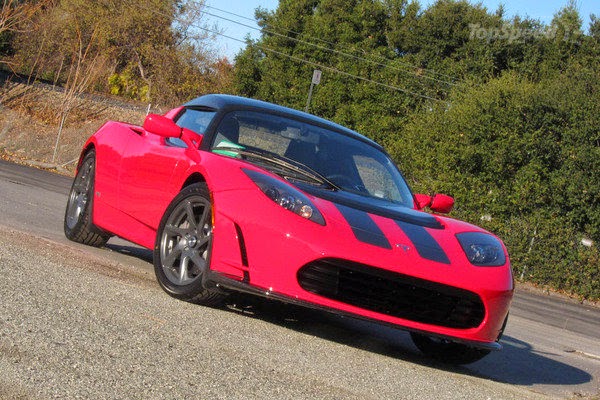MIT provides us with more details on the Tesla Roadster upgrade.
Tesla Roadster 3.0 With Range of 400 Miles.
Elon Musk is extending the range for Tesla Roadster to 400 miles! We have the new frontier for Lithium technology put into the real life operation now.
Consumer Reports: Owners Survey Rates Tesla Model S The Most Loved Car. 98% Would Buy Again.
MIT:
How Tesla Boosted Its Roadster’s Range by 50 Percent.
An upgrade to the Roadster extends its range and shows how far battery technology has come.
Tesla stopped making the $100,000-plus Roadster in 2011, but this spring those who already own one can upgrade it to travel 400 miles on a charge, a 50 percent increase. The new range is competitive with conventional cars, which typically can travel 350 to 500 miles on a tank of gasoline. Tesla isn’t saying how much the upgrade will cost Roadster owners.
Part of the Roadster’s range boost will come from using tires with less rolling resistance and from making modifications to the car’s body that improve its aerodynamics.
Though Tesla isn’t explaining in detail how it achieved the increase in energy storage, it was likely made via incremental improvements to existing battery technology, not through major breakthroughs in battery materials, says Jeff Dahn, a professor of physics and chemistry at Dalhousie University. He analyzed cells made by Panasonic, Tesla’s cell supplier, and found several small changes that might account for a 30 percent increase. For example, Panasonic has done away with some bulky plastic packaging material that had been wasting space inside the cells. He says Tesla’s battery pack could also accommodate slightly larger cells that store more energy.
In theory, it’s possible to more than double the range of lithium-ion batteries by changing their chemistry or fundamental structure (see “A Prototype Battery Could Double the Range of Electric Cars”). That’s because in current designs the active energy-storing material, lithium, makes up just a small portion of the entire battery. The majority is devoted to storing and protecting the lithium and providing pathways for electrical current. It may be possible to greatly reduce the amount of supporting material.
But such alterations to battery materials have been difficult because increasing their energy storage often makes batteries less safe, more difficult to manufacture, or less durable. For example, the startup A123 Systems, which raised hundreds of millions of dollars from investors and the government before declaring bankruptcy in 2012, was founded in 2001 on the promise of nanomaterials that could multiply energy storage by 10 times. But it couldn’t manufacture these materials, and so it switched to far less energy dense ones whose main advantages were safety and faster charging.
Tesla CEO Elon Musk has often said that novel battery chemistries are overhyped. He is betting heavily that they won’t beat incremental improvements to existing ones anytime soon. In Reno, Nevada, Tesla is building the world’s largest lithium-ion battery factory, which will be devoted to manufacturing conventional batteries. MIT."


No comments:
Post a Comment